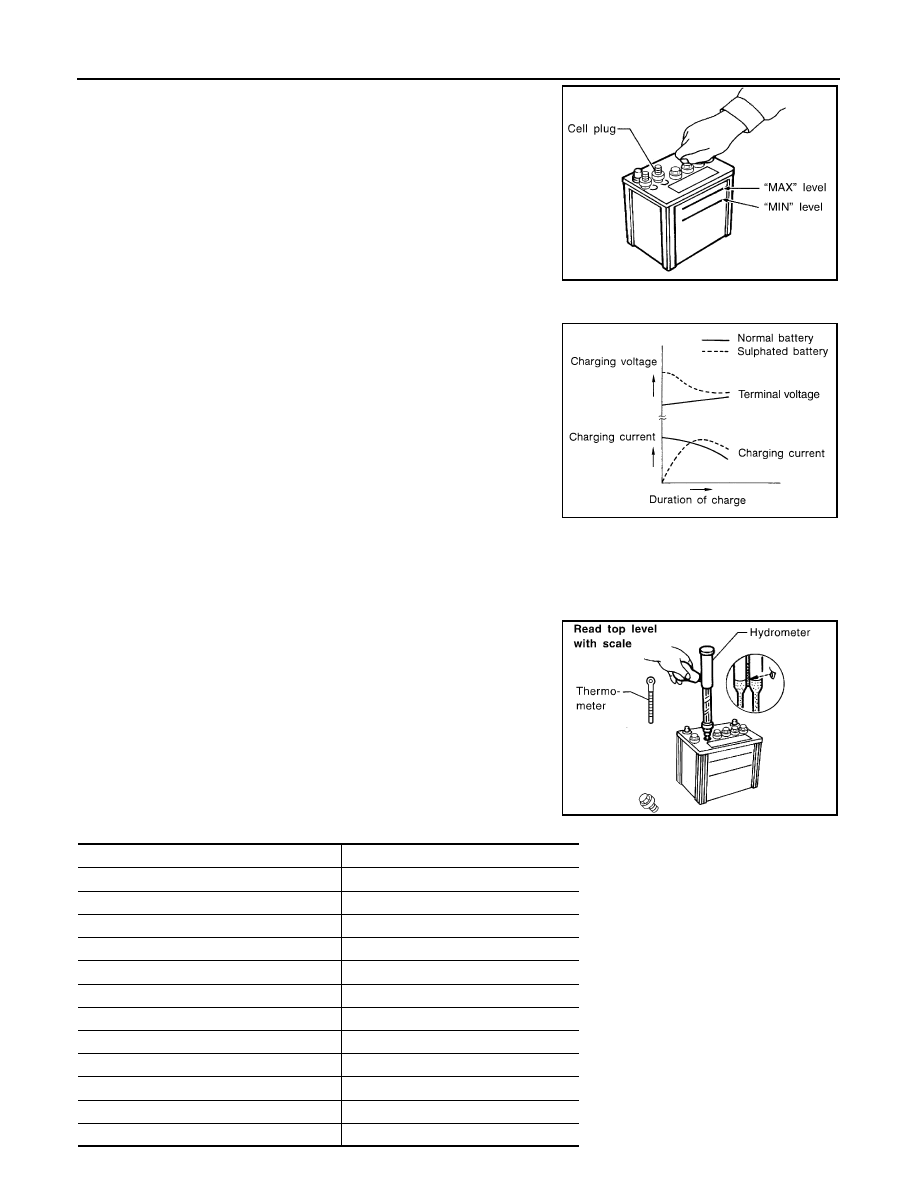Content .. 1016 1017 1018 1019 ..
Nissan Leaf. Manual - part 1018

PG-84
< BASIC INSPECTION >
12V BATTERY INSPECTION
• Remove the cell plug using a suitable tool.
• Add distilled water up to the MAX level.
SULFATION
• A 12V battery will be completely discharged if it is left unat-
tended for a long time and the specific gravity will become
less than 1.100. This may result in sulfation on the cell plates.
• To determine if a 12V battery has been “sulfated”, note its
voltage and current when charging it. As shown in the figure,
less current and higher voltage are observed in the initial
stage of charging sulfated batteries.
• A sulfated 12V battery may sometimes be brought back into
service by means of a long, slow charge, 12 hours or more,
followed by a battery capacity test.
Specific Gravity Check
NOTE:
Check the charge condition of the battery.
Periodically check the specific gravity of the electrolyte. Keep a close check on charge condition to prevent
over-discharge.
1. Read hydrometer and thermometer indications at eye level.
2. Use the chart below to correct your hydrometer reading accord-
ing to electrolyte temperature.
Hydrometer Temperature Correction
MEL043F
PKIA2353E
MEL042FA
12V Battery electrolyte temperature [
°C (°F)]
Add to specific gravity reading
71 (160)
0.032
66 (150)
0.028
60 (140)
0.024
54 (130)
0.020
49 (120)
0.016
43 (110)
0.012
38 (100)
0.008
32 (90)
0.004
27 (80)
0
21 (70)
−0.004
16 (60)
−0.008
10 (50)
−0.012